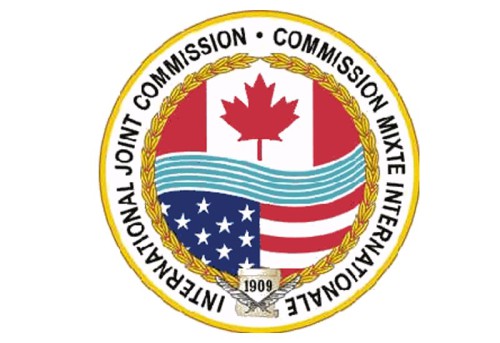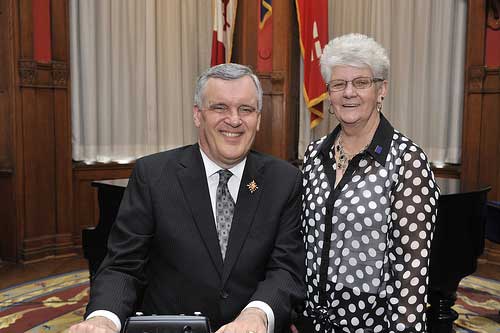LAKE HURON—With only five days left for comment on the International Joint Commission’s (IJC) adaptive management plan, groups like the Manitoulin Area Stewardship Council (MASC) are hoping to have their concerns heard and make it known that adaptive management is not an option.
“I don’t want to talk about adaptive management. We want to stay focussed on the manmade consequences of dredging,” said MASC secretary Therese Trainor, noting the drastic water loss (two feet) out of the St. Clair River. “Financially, that makes the most sense.”
Adaptive management is a “structured, iterative process for continually improving management policies and practices by learning from the outcomes of previous policies and practices,” the IJC states.
Ms. Trainor said she worries the issue is being “swept under the table, and we don’t want that to happen.”
“Everybody talks about fluctuation, but there is no fluctuation—there is no up, only down,” she added. “I don’t even think we should use the word fluctuation for Lake Huron.”
Ms. Trainor said the amount municipalities will be asking for in funds for help with dredging their marinas and harbours would likely equal more in the long term than fixing the problem humans have caused. MASC believes that if American and Canadian governments split the cost of remediation, it would be a relatively small expenditure. One estimate puts Georgian Bay water loss at upwards of $500 million for dredging-related costs, she said, not to mention the ill affects dredging has on the environment.
“Fixing the St. Clair would be restoring nature and would help mitigate the effects of climate change,” Ms. Trainor said.
The Expositor also spoke to Jim Nies at his Whitewater, Wisconsin home. Mr. Nies is a seasonal resident of Kagawong and a MASC member.
Mr. Nies reiterated MASC’s belief that the St. Clair River should be the IJC’s focus.
“The problem is manmade and has put the middle lakes (Huron/Michigan) into an unnatural state,” he said. “Everyone agrees that there is a difference between Lakes Michigan and Huron and the other Great Lakes. They are about two feet lower, which corresponds with the dredging of the St. Clair River.”
In its plan, the IJC states: “Water level extremes can be addressed in two ways, either by managing water levels through dams or other structures, or by managing how we respond to the impacts of those water level changes.”
“The proposed Adaptive Management Plan is intensively collaborative in nature,” the plan overview states. “It provides a new approach to addressing water level issues, one that is based on working with partners in the Great Lakes-St. Lawrence River system to gather and share critical information over time, assess the information with state-of-the-art tools, develop adaptation strategies, measure our collective success in managing the impacts of extreme water levels and adapt accordingly. Its aim is to reduce the risks associated with extreme water levels.”
Mr. Nies contacted the IJC in regards to the plan and received a reply from John Nevin, public affairs advisor, which states, ‘The draft Adaptive Management is a part of the IJC recommendations but there are several other important elements. That’s why the fact sheet refers to recommendations regarding next steps that are still forthcoming. I can’t really be more specific than ‘soon’ about the timeframe.”
“This leads me to have some hope,” Mr. Nies said about the IJC statement to him.
“I maintain that there’s been a climatic shift that occurred around 1999 and I want to acknowledge that we’re in a continued downward slope,” he added.
He said the IJC gives two options: manmade structures or better management of the coastal zone.
“Let’s use the Kagawong harbour as an example,” he said. “You have a city dock and marina and if water continues to decrease, there’s no more marina and we’re just to adapt to it. You can’t just do that, that would be the end of Manitoulin as we know it.”
“The costs are going to be astronomical to adapt,” Mr. Nies continued, noting Michigan’s Governor Rick Snyder recently passed an emergency spending measure for one small part of Lake Michigan for $20 million.
The plan will be carried out with the creation of a formal Board of Control Adaptive Management Committee that will oversee the ongoing assessment and evaluation of the regulation plans for the outflows of Lake Superior and Lake Ontario. In addition there is also to be a Levels Advisory Board, which will work with Great Lakes-St. Lawrence River agencies, organizations and institutions as a network.
The fact that Lakes Huron and Michigan are not well represented here is of concern to Mr. Nies.
“MASC is in support of data gathering and cooperative planning, but they should have Lakes Huron/Michigan added to the management board,” Mr. Nies said. “The two middle lakes are different from the others. Restoring them to their original state should be the objective. If it is done slowly, and over time, it shouldn’t affect the lower lakes.”
To submit comments on the plan, go the IJC’s website, www.ijc.org/boards/stlawrencerivertaskteam, and click on the ‘leave a comment’ button at the bottom of the page.




